1. Introduction
Bali Strait is located between Bali Island and Java Island (East Java Province) as shown in Fig. 1. On the North of the strait is Bali Sea and on the South of the Strait is Indian Ocean. Bali Strait is famous among the fisherman, mainly due to the dominant pelagic fish species of Sardinella lemuru. The study from Hendiarti et al. (2005) found that there is an upwelling ocean phenomenon in Bali Strait which makes this strait rich in nutrient. Therefore this strait becomes important for the economic of coastal community around Bali and East Java.
In the last few years, marine debris has become a problem in Bali Strait especially during the rainy season (December, January and February). Based on the report from the Ministry of Environment and Forestry of the Republic of Indonesia in Bali Region, in January 2014, the total amount of debris stranded in Kuta Beach, Bali exceeded 1,700 ton, with an average of 30 ton/day (ppebalinursa.menlh.go.id). This phenomena will affect the fishery condition in Bali Strait which will lead to the economic problem.
Marine debris is classified into two categories, which are the debris that is stranded directly to the seabed and the debris that floats on the ocean and is stranded on the coastal area (Hardesty and Wilcox, 2011). In order to deal with the marine debris problem, such as in Bali Strait, the study about marine debris becomes important. The source of marine debris floating on the ocean can be known by particle tracking of numerical simulation since the debris movement is mainly carried by the seawater surface current.
In this study, numerical simulations of hydrodynamic of seawater surface in Bali Strait were carried out. This study is primarily focused on particle movements in Bali Strait related to the marine debris along the seawater circulation due to tide.
2. Method
2.1 Numerical model
In this study, the Finite Volume Coastal Ocean Model (FVCOM) was used to simulate the seawater circulation (Chen et al., 2006). The governing equation in the FVCOM model consists of the momentum equations (Eqs. 1~3), the continuity equation (Eq. 4), temperature (Eq. 5), salinity (Eq. 6), and density (Eq. 7):
where x, y, and z are the east, north, and vertical axes in the Cartesian coordinates system; u, v, and w are the x, y, and z velocity components; T is the temperature; S is the salinity; p is the density; P is the pressure; f is the Coriolis parameter; g is the gravitational acceleration; Km is the vertical eddy viscosity coefficient; and Kh is the thermal vertical eddy diffusion coefficient. Fu, Fv, Ft, and Fs represent the horizontal momentum, thermal and salt diffusion terms, respectively. The total water column depth is D =H+ζ, where H is the depth and ζ is the height of the free surface (relative to z =0).
Vertical eddy mixing is calculated either by Mellor and Yamada level 2.5 (Mellor and Yamada, 1982) or the k −ɛ turbulence closure schemes (Rudi, 1987). The horizontal eddy viscosity and diffusion are calculated by the Smagorinsky's parameter (Smagorinsky, 1963). A σ transformation in the vertical axis is used to convert irregular bottom topography into a regular computational domain.
FVCOM subdivides the horizontal computational domain into a set of non overlapping unstructured triangular grid. An individual triangle is composed of three nodes, a centroid and three edges. The horizontal velocity components (u, v) are located at the triangle centroids and the vertical velocity as well as all scalar variables (temperature, salinity, etc.) are placed at the nodes. More about FVCOM is described in detail in Chen et al. (2006) and model validations as well as comparisons with other numerical models can be found in Chen et al. (2007) and Huang et al. (2008).
2.2 Model setup
The triangular unstructured grid numerical model domain is shown in Fig. 2. Two open boundaries are located on the top and bottom of the domain (solid red line) while the close boundary is the coastline of Bali and East Java. The horizontal resolution (dx) in FVCOM is defined by the length of an individual triangle edge. In this study, the minimum and maximum horizontal resolutions were 50 m and 500 m, respectively. Small size grids were used at the narrow strait as shown by the intersect image in Fig. 2. In the vertical layer, the uniform layers with the 2nd σ layer were applied in this numerical simulation.
Fig. 3 shows the bathymetry map of Bali Strait obtained from Hydro-Oceanography Division, Indonesian Navy (DISHIDROS-TNI AL). Bali Strait is shallow in the middle of the narrow strait and steep at south of the strait, and directly faces to the Indian Ocean.
In this study, model inputs in the open boundary were tide elevations using 4 tidal components, S2, M2, K1, and O1. These tidal components were obtained from the tide elevation data by the Ocean Research Institute (ORI), University of Tokyo (ORI-Tide) (Matsumoto et al. 1995). Temperature and salinity were set to be constant. The 5 year-averaged wind data obtained from the European Center for Medium-Range Weather Forecast (ECMWF) were used as the meteorological wind conditions. The vertical eddy viscosity and the vertical thermal diffusion coefficients were calculated using modified Mellor-Yamada level 2.5 (MY-2.5) turbulence closure model (Galperin et al., 1988). The horizontal diffusion coefficients were calculated using the Smagorinsky eddy parameterization method (Chen et al., 2003). The simulation was carried out for 30 days with time step of 1 second. The initial setup conditions are summarized in Table 1.
3. Results
3.1 Comparison of simulation and observation data
Sea surface elevations obtained from numerical simulation using FVCOM were compared with observation data obtained from the 1 hour tide-gauge time series measured at the Pengambengan Station (114°34′24.89″ East and 8°23′11.47″ South), which belongs to the Institute for Marine Research and Observation, under the Ministry of Marine Affairs and Fisheries of Indonesia. The time series of sea surface elevation from the numerical simulation and observation are shown in Fig. 4. The comparison shows that the numerical model is able to simulate the elevation of sea water in Bali strait.
For the quantitative validation, the root mean square error (RMSE) of seawater surface elevation obtained from the numerical simulation and observation was calculated as follows:
where xo and xm a re the value of the observations and model respectively and n is the total data. The RMSE is 0.086 m, which indicates a good agreement between the simulation and observation.
3.2 Sea surface elevation
Fig. 5 shows a time series of seawater surface elevation obtained from the simulation. From the 30 days simulation, two spring tides and two neap tides are found. The spring tide (Fig. 5a) is the condition when the largest range of water surface elevation occurs while the neap tide (Fig. 5b) is the opposite condition. Moreover, two tides per day with a different range were occurred in Bali Strait. This indicates that Bali Strait has a mixed tide cycle or mixed semi-diurnal tide.
The spatial distributions of sea surface elevation during the spring tide and the neap tide are shown in Figs. 6 and 7, respectively. The four tide conditions consisting of flood tide, high tide, ebb tide and low tide were analyzed. The flood tide is the rising process from low water to high water. The high tide is the highest water elevation in one oscillation process. The ebb tide is the falling process from high water to low water. The low tide is the lowest water elevation in one oscillation.
Fig. 6a shows that the sea surface during the flood tide is higher in Indian Ocean than in Bali Sea. This condition leads to the water moving from Indian Ocean to the Bali Sea through the narrow strait between Bali and East Java until it reaches the high tide condition (Fig. 6b). The seawater then moves back to the Indian Ocean during ebb tide (Fig. 6c) until it reaches the low tide condition (Fig. 6d). The similar pattern of seawater movement is also found during the neap tide condition as shown in Fig. 7.
3.3 Tidal current at the narrow strait
Tidal current on the seawater surface during the spring tide and neap tide conditions were analyzed and the results are shown in Figs. 8 and 9, respectively. Similar to the analysis in seawater surface elevation, the tidal current was analyzed during the flood, high, ebb and low tide conditions. The analyzed of tidal current focused on the narrow strait shows the highest velocity magnitude in this area.
During the spring tide condition, the seawater moves to the top of the narrow strait with the maximum velocity magnitude of 1.69 m/s (Fig. 8 a). This current then decreases to the maximum velocity magnitude of 0.85 m/s as the tide reaches the high tide condition (Fig. 8b). The seawater then rushes back to the Indian Ocean during the ebb tide with the maximum velocity magnitude of 2.25 m/s (Fig. 8c) until it reaches the low tide condition (Fig. 8d) with the maximum velocity of 0.8 m/s. During the high and low tide conditions, an eddy is observed on the top of the narrow strait. The similar pattern is also observed during the neap tide condition as shown in Fig. 9 while there is no eddy formed during the neap tide condition. The maximum current velocity magnitude is 0.91 m/s, which occurres during the flood tide in the neap tide conditions (Fig. 9a).
4. Conclusion
The Finite Volume Coastal Ocean Model (FVCOM) was used to simulate the seawater circulation in Bali Strait, Indonesia. The numerical simulation results show a good agreement with the observation data, which indicates that FVCOM is able to simulate the water condition in Bali Strait. The water circulation in Bali strait is mainly influenced by the tides from Indian Ocean, which is shown by the rising of seawater surface firstly in the Indian Ocean both during the spring and neap tide conditions. The strong tide current is found at the narrow strait during the ebb tide of the spring tide cycle. The neap tide period shows the similar pattern as the spring tide period with smaller seawater surface elevation and velocity magnitude. An eddy is observed on the north of the narrow strait which occurs only during spring tide period.




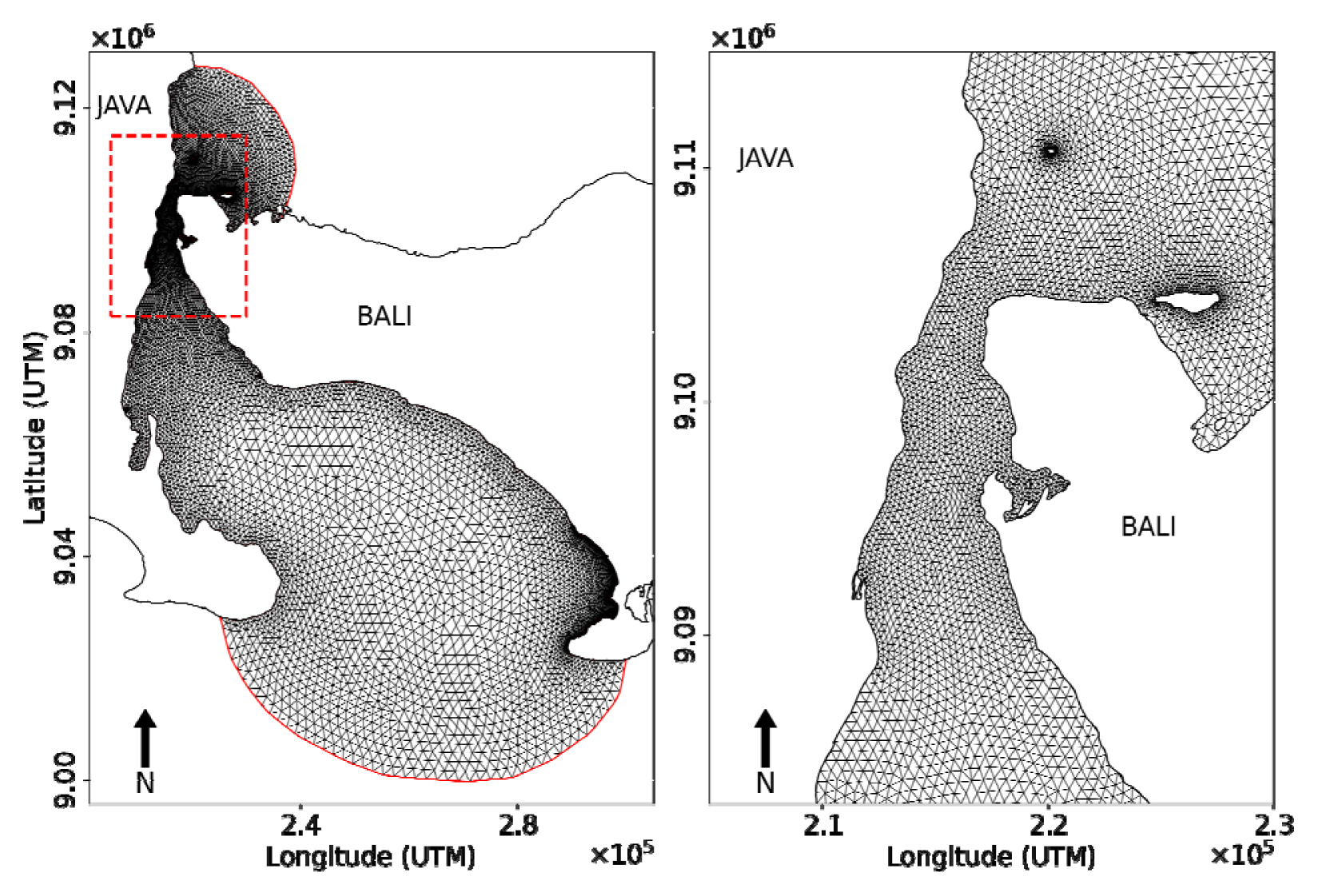
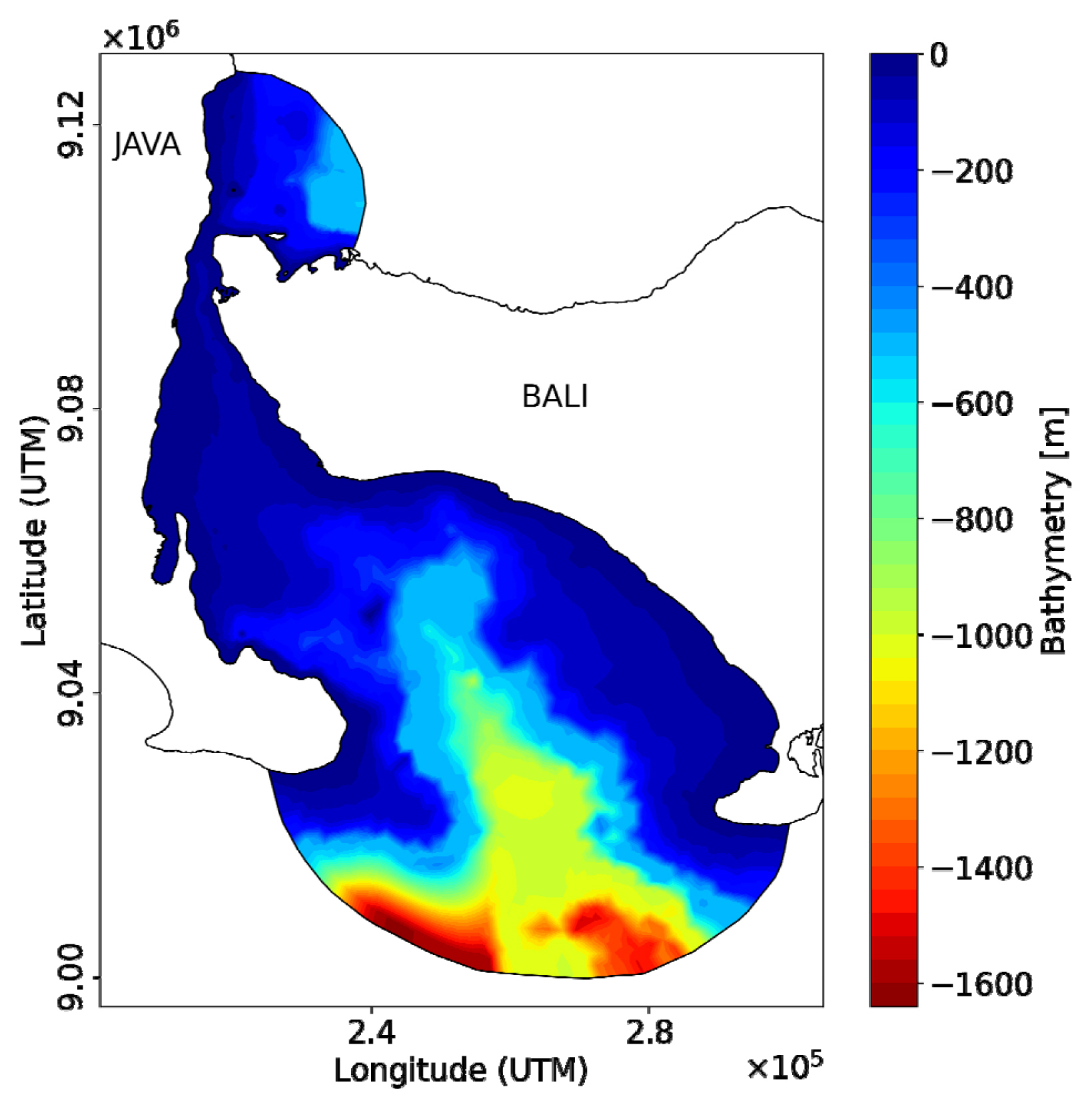
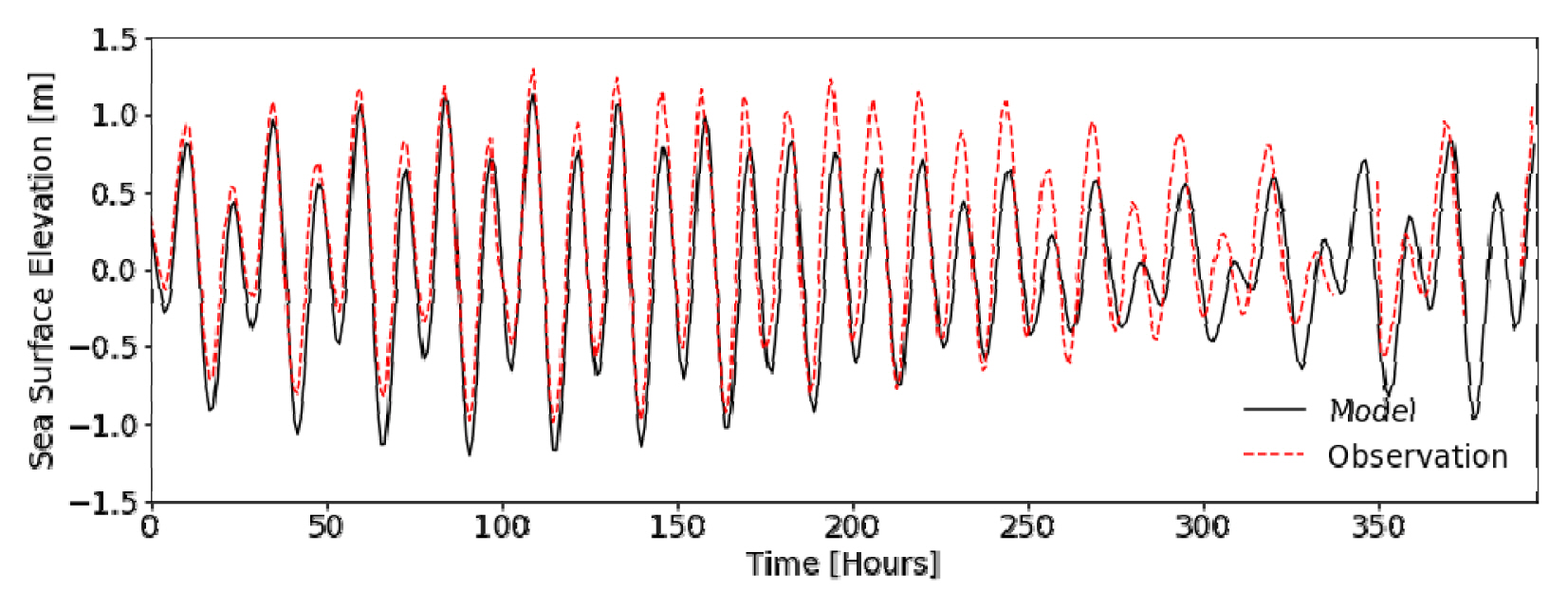
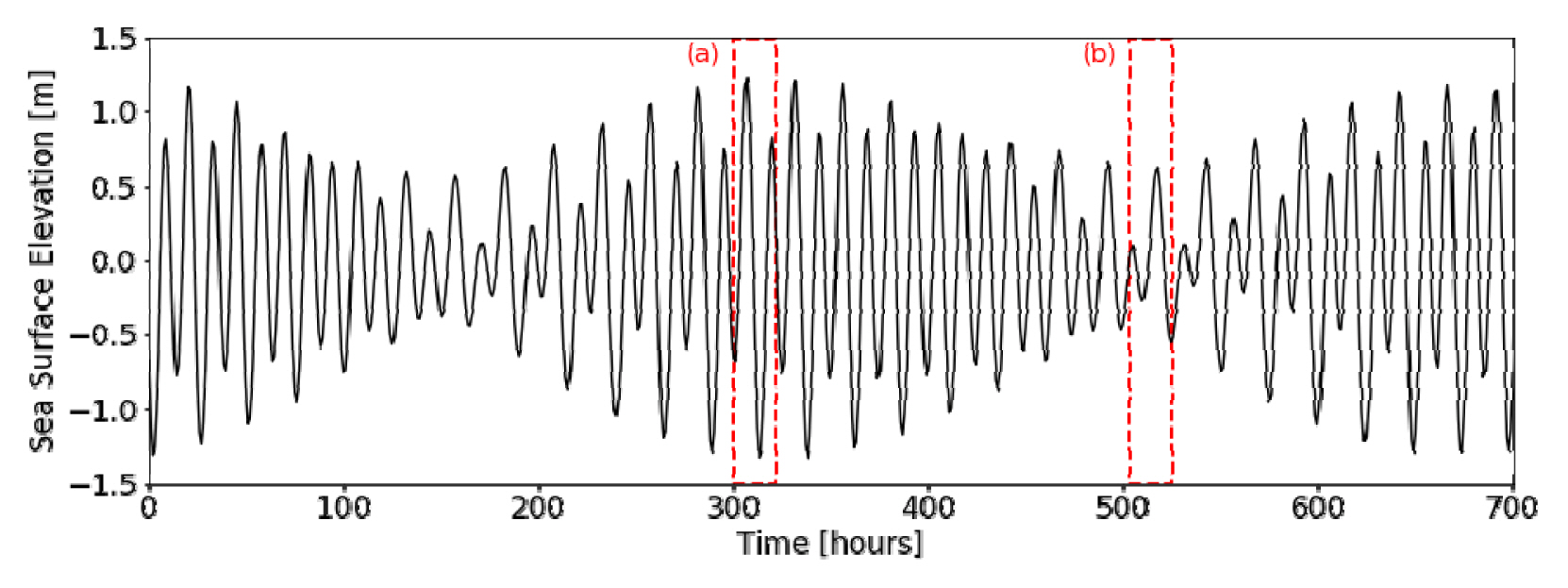
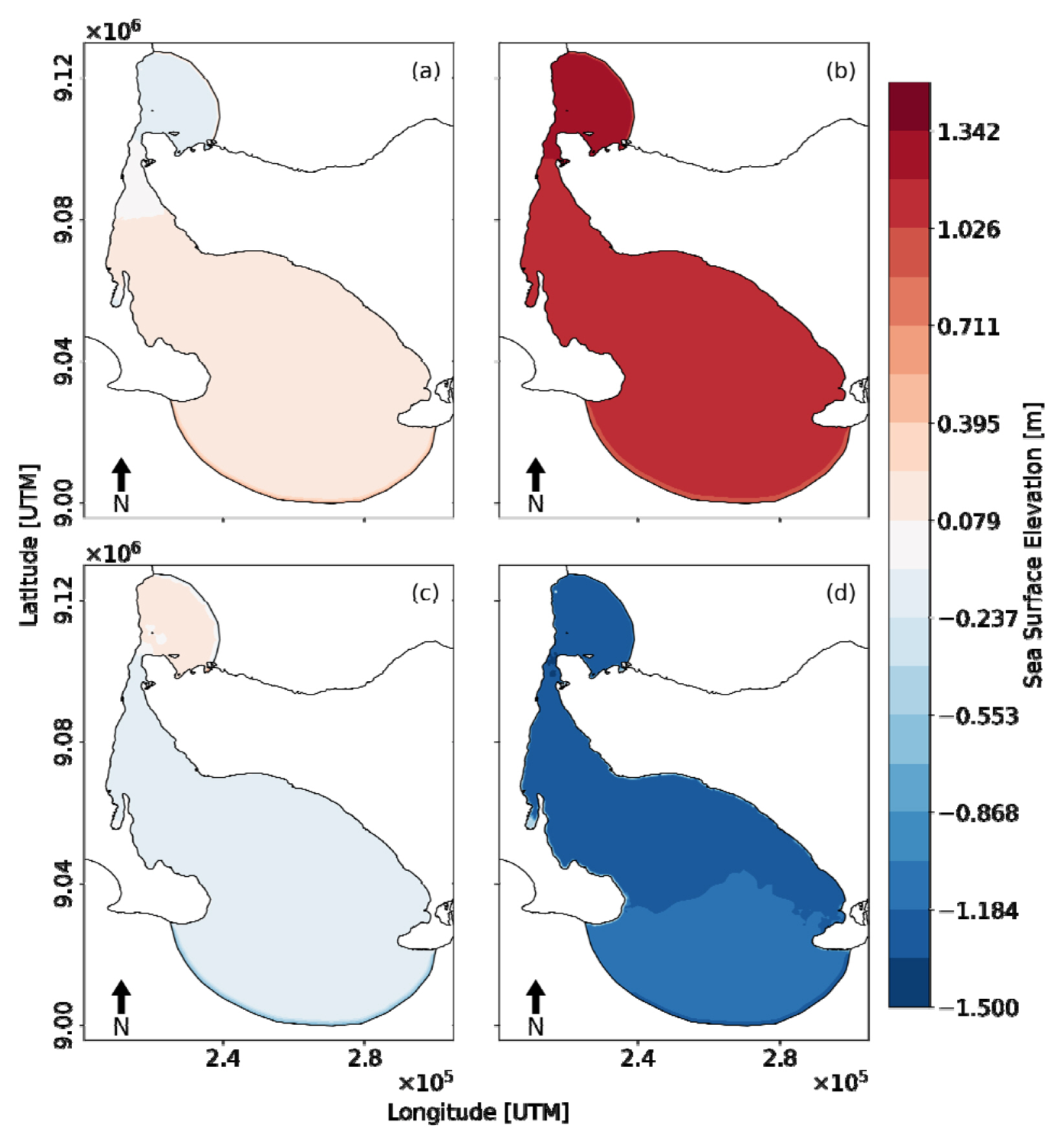
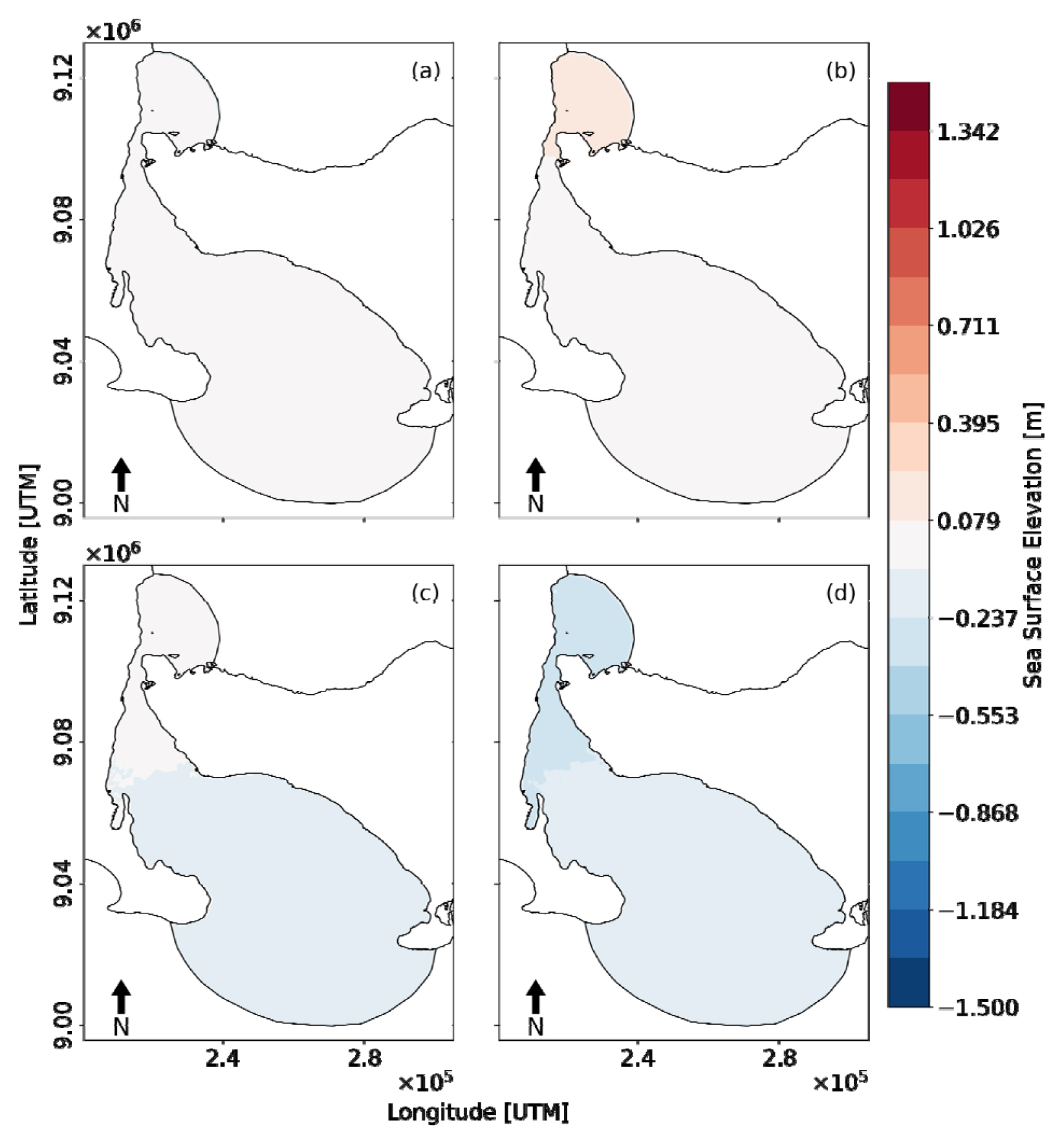

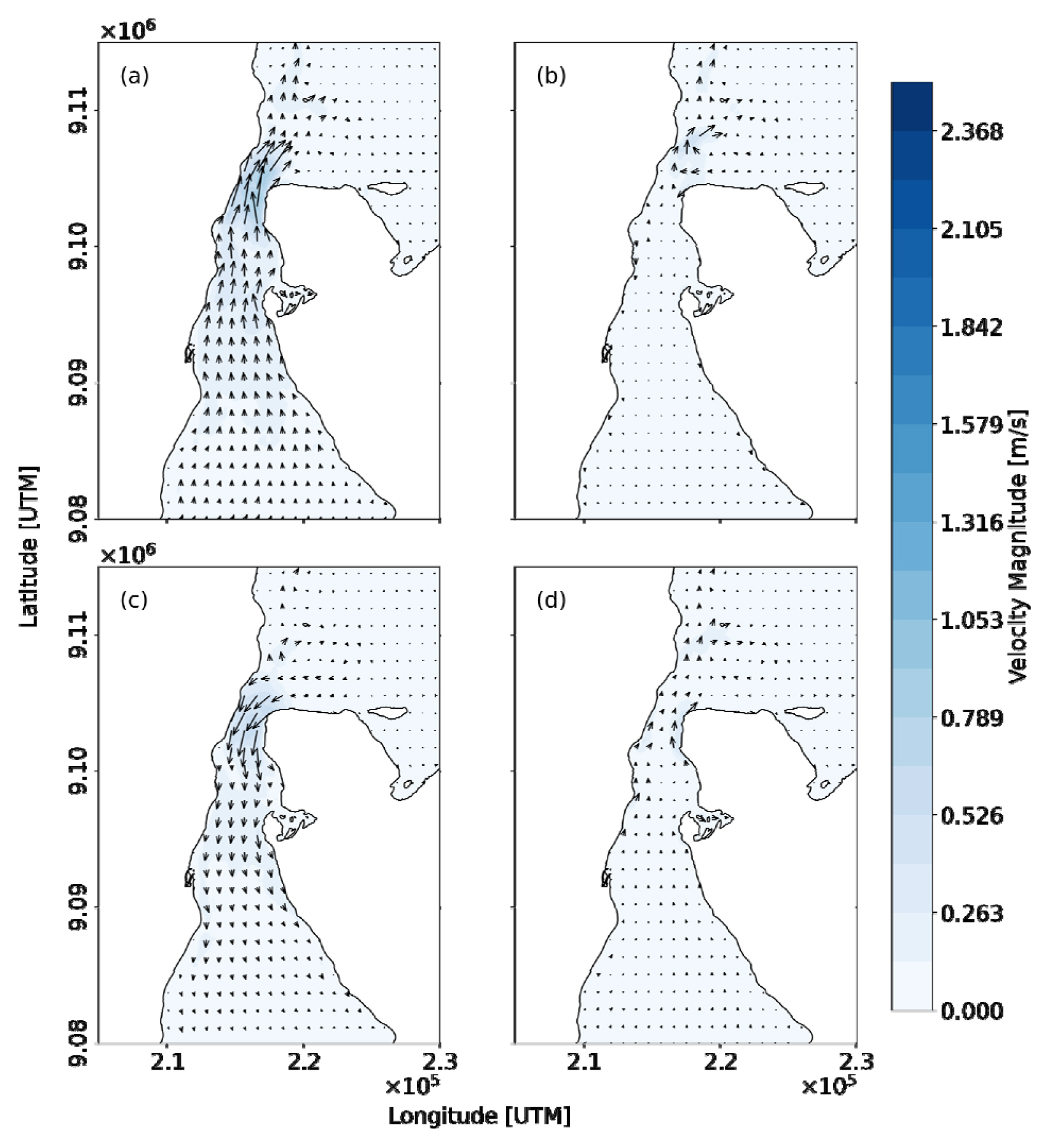
 PDF Links
PDF Links PubReader
PubReader ePub Link
ePub Link Full text via DOI
Full text via DOI Download Citation
Download Citation Print
Print






